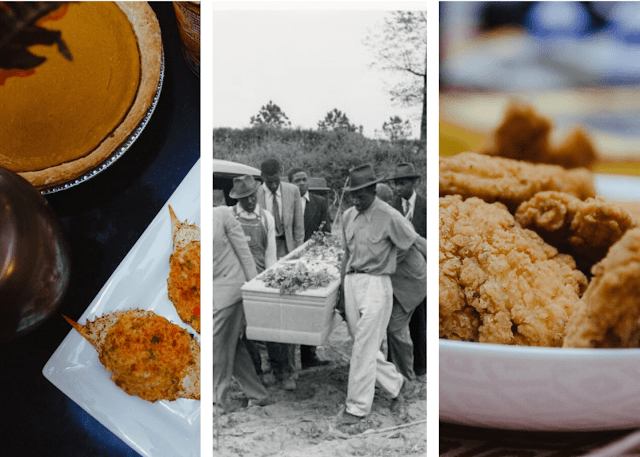Food is an essential part of the mourning process for
African Americans. In their culture, cooking and sharing food is a way to honor
the deceased and show empathy for the bereaved family. African American culture
also has a tradition of bringing food to funerals, which can be snacks like
sandwiches, salads, or casseroles, or main meals like jambalaya, grilled meats,
or fried chicken. Sometimes, families may also bring the deceased’s favorite
items to the funeral, such as books, toys, or collectibles. This helps to
symbolically provide comfort that the person who died is still present in the
hearts and minds of the family and relatives left behind.
The tradition of bringing food to funerals in the US has its
origins in several European cultures, particularly German and Swedish cultures.
In German culture, this tradition is known as “Kaffeeklatsch” or “Kaffee und
Kuchen,” where the family and friends of the deceased come together to talk and
share memories. In this group, snacks and drinks such as coffee and cakes are
usually provided. The tradition of bringing food to the cemetery is still
practiced in the German-American community in the United States and is part of
the funeral culture that helps them through their grief.
Similarly, in Swedish culture, there is a tradition called
“Kafferep,” where relatives and families bring food and drinks to share after
the funeral. The Kafferep tradition often coincides with a shared lunch or
dinner and can include a variety of foods, such as sandwiches, cakes, and
desserts.
Besides bringing food, there are several funeral traditions
that are unique to the southern part of the United States. One of them is the
jazz funeral, which is a tradition of commemorating life and death with jazz
music accompanied by dance. Jazz funerals are usually held after the official
funeral ceremony is over and are a moment to gather, talk to one another, and
remember the deceased. This tradition originated in the African American
community and reflects the region’s rich music and dance culture.
Besides the jazz funeral, there is a tradition of cooking
and distributing food to family and neighbors after the funeral. This is often
done to help the bereaved family and to commemorate the deceased by sharing
foods they like or cooking the family’s special food. Other unique funeral
traditions that exist in the southern United States include funerals with
rainbow dances, voodoo funerals, and funerals with distinctive religious
ceremonies. These traditions aim to commemorate the life of the deceased as
well as provide support for the family left behind.
Sometimes, people may choose to inscribe their favorite
cooking recipe on their tombstone regarding their hobby while still alive. They
share recipes with others as a way of passing them on to the next generation.
This unique and touching idea went viral when Rosie Grant, a librarian who
archives US graves, found several tombstones with recipes inscribed on them.
The first headstone she found was that of Naomi Miller-Dawson, an African
American, in Green-Wood Cemetery, Brooklyn. Grant immortalized the spritz cake
recipe that is prominently displayed on Naomi’s grave. This Scandinavian cake
is usually served as a dessert for Christmas.
In conclusion, bringing food to funerals is an important
tradition in African American culture that helps to honor the deceased and
provide support for the bereaved family. This tradition, which originated in
German and Swedish cultures, has now become an integral part of the funeral
culture in the United States. Funeral traditions in the southern part of the
country are also unique, with jazz funerals, cooking and distributing food, and
other distinctive ceremonies that commemorate the life and death of the
deceased. Finally, inscribing a favorite recipe.

Comments
Post a Comment